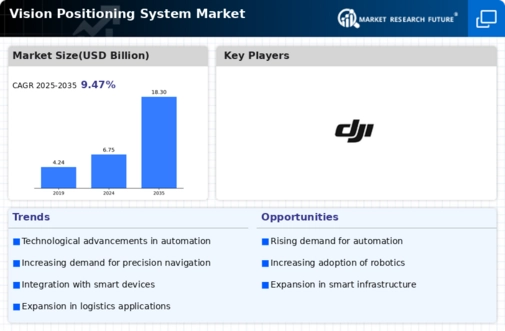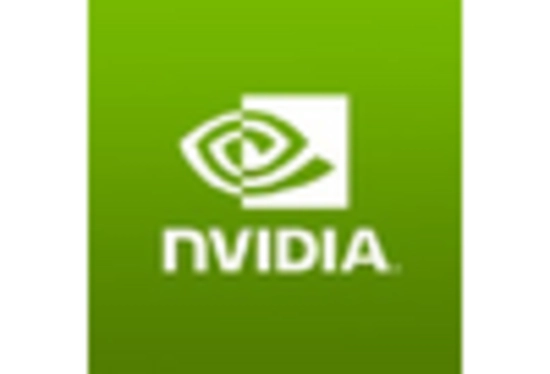Emergence of Smart Cities
The Vision Positioning System Market is poised to benefit from the emergence of smart cities, which prioritize the integration of technology to enhance urban living. As cities evolve into smart ecosystems, the need for efficient navigation and positioning systems becomes essential for managing transportation, logistics, and public services. The smart city market is projected to reach USD 2.57 trillion by 2025, creating a fertile ground for Vision Positioning Systems to thrive. These systems can facilitate real-time tracking of vehicles, optimize traffic flow, and improve public transportation efficiency. Furthermore, the integration of Vision Positioning Systems in smart city initiatives aligns with sustainability goals, as they contribute to reducing congestion and emissions. This trend indicates a promising future for the Vision Positioning System Market.
Advancements in Robotics and Drones
The Vision Positioning System Market is significantly influenced by advancements in robotics and drone technology. As these technologies evolve, the need for accurate positioning systems becomes paramount. Drones, for instance, are increasingly utilized in sectors such as agriculture, surveillance, and delivery services, necessitating reliable positioning solutions. The market for drones is expected to reach USD 43 billion by 2024, highlighting the potential for Vision Positioning Systems to play a crucial role in enhancing drone capabilities. Moreover, the integration of Vision Positioning Systems in robotics allows for improved navigation and obstacle avoidance, which is essential for autonomous operations. This synergy between robotics and positioning systems is likely to drive innovation and growth within the Vision Positioning System Market.
Growing Focus on Safety and Security
Safety and security concerns are becoming increasingly prominent in various sectors, thereby driving the Vision Positioning System Market. Industries such as construction, transportation, and public safety are prioritizing the implementation of advanced positioning systems to enhance situational awareness and mitigate risks. For instance, the construction sector is projected to invest over USD 1 trillion in safety technologies by 2025, indicating a substantial opportunity for Vision Positioning Systems to contribute to safer work environments. Additionally, the integration of these systems in public safety applications, such as emergency response and surveillance, underscores their importance in ensuring community safety. As organizations recognize the value of proactive safety measures, the demand for Vision Positioning Systems is likely to increase.
Rising Demand for Automation in Industries
The Vision Positioning System Market is experiencing a notable surge in demand for automation across various sectors, including manufacturing, logistics, and agriculture. As industries strive to enhance operational efficiency and reduce human error, the adoption of advanced positioning systems becomes increasingly critical. According to recent data, the automation market is projected to grow at a compound annual growth rate of approximately 10% over the next five years. This trend indicates a strong inclination towards integrating Vision Positioning Systems, which facilitate precise navigation and tracking, thereby optimizing workflows. Furthermore, the need for real-time data and analytics in decision-making processes further propels the Vision Positioning System Market, as organizations seek to leverage technology for competitive advantage.
Increased Investment in Research and Development
Investment in research and development is a critical driver for the Vision Positioning System Market. As companies seek to innovate and enhance their offerings, R&D initiatives are essential for developing advanced positioning technologies. The global investment in R&D is expected to exceed USD 2 trillion by 2025, reflecting a strong commitment to technological advancement. This influx of funding is likely to accelerate the development of more sophisticated Vision Positioning Systems, incorporating features such as enhanced accuracy, real-time data processing, and integration with other technologies. Additionally, collaboration between academia and industry is fostering innovation, leading to the emergence of new applications and solutions within the Vision Positioning System Market. This focus on R&D is expected to drive growth and competitiveness in the market.
















Leave a Comment